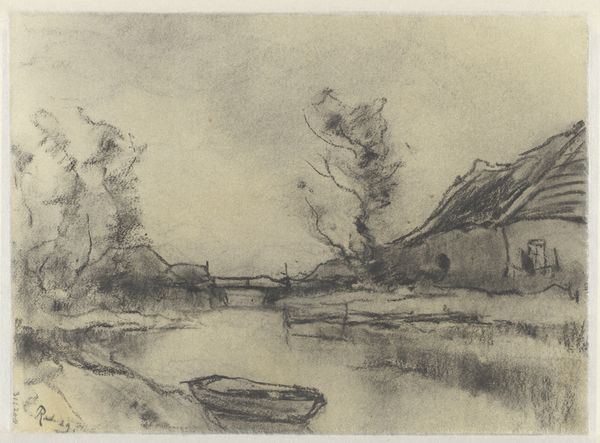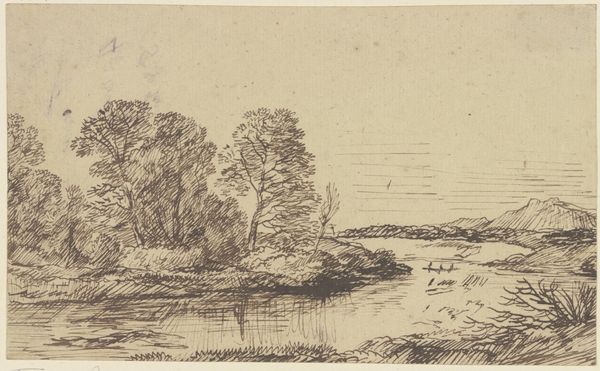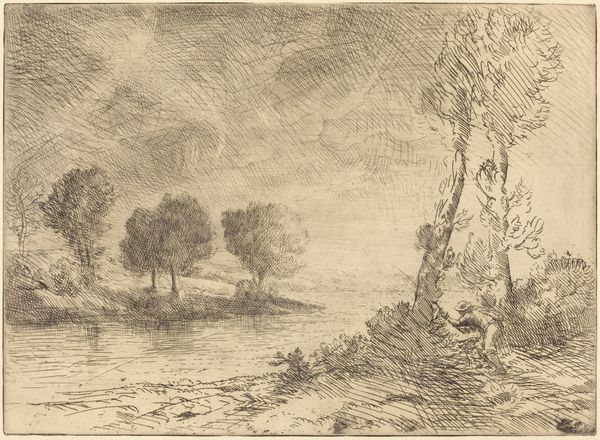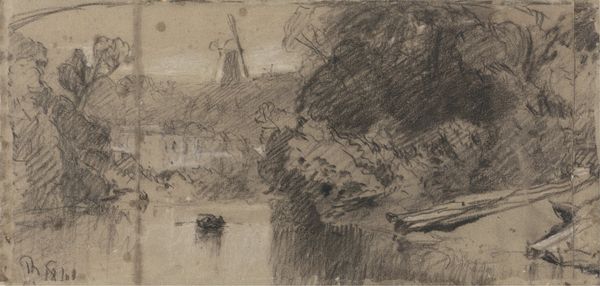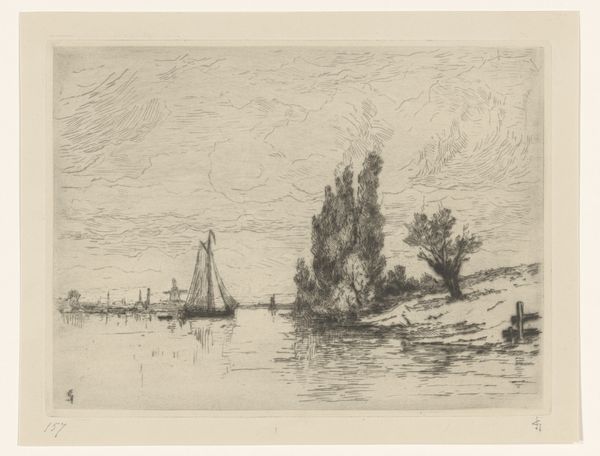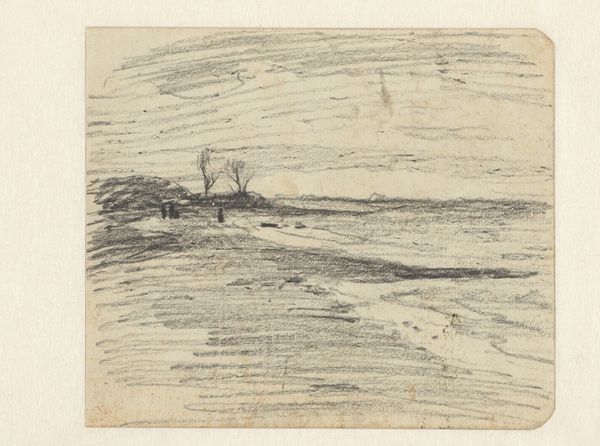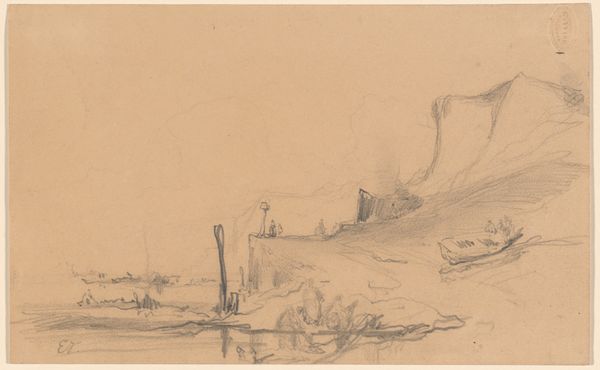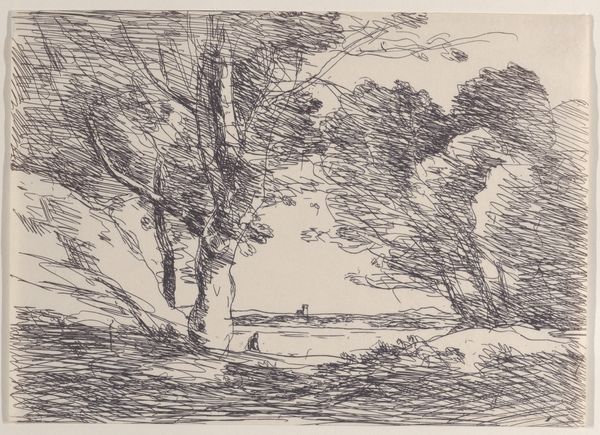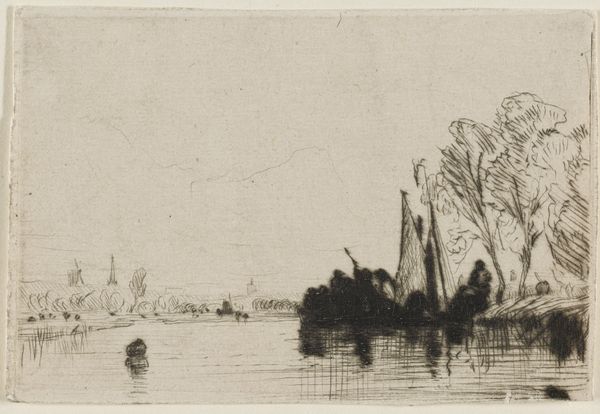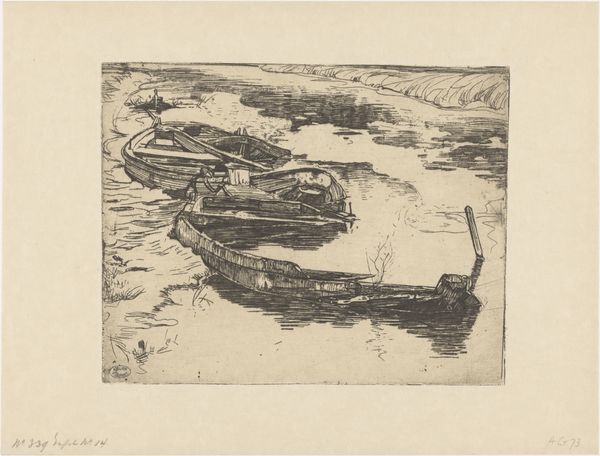
drawing, pencil
#
drawing
#
pencil sketch
#
landscape
#
pencil
#
realism
Dimensions: height 123 mm, width 177 mm
Copyright: Rijks Museum: Open Domain
Curator: Ah, this wispy rendering arrests the eye doesn’t it? Here we have Carel Nicolaas Storm van 's-Gravesande’s, “Gezicht op een rivier," created sometime between 1851 and 1924. Editor: Yes, my immediate feeling is of stillness, almost melancholic. That restricted palette and the indistinct forms create such a pensive mood, don't you think? Curator: It certainly does. And rendered simply with pencil, too. Look at how effectively van 's-Gravesande suggests depth and reflection on the water’s surface, it almost has a silvery glow! Editor: The water acts as this wonderful mirror reflecting the dark shapes of trees and the subtle line of the opposite bank, right? These repeated forms are powerful symbols that create a feedback loop of memory, the world imprinting itself, reflecting, remembering itself! I'm especially drawn to those marks which feel a little like scratches at the very bottom. Curator: Interesting. I find that section a place of rest amidst all the reflections. Its marks, light as a feather, show his facility with the graphite. There's no erasing to be found. I can easily picture the artist standing here, capturing what we'd probably consider quite mundane. Editor: It's hardly mundane; van 's-Gravesande takes the overlooked and renders it sacred, a moment frozen and given back to us! Even in its simplicity, there’s something profound at play, like gazing into your own subconscious mirrored in the external world. Curator: That resonates deeply. Thank you, the insight allows me to re-experience a newfound admiration for the piece. It transforms such a common place in to something far more profound. Editor: Yes, the power of observation transforming the landscape; not just into scenery, but an encounter, laden with emotional and psychological echoes.
Comments
No comments
Be the first to comment and join the conversation on the ultimate creative platform.

